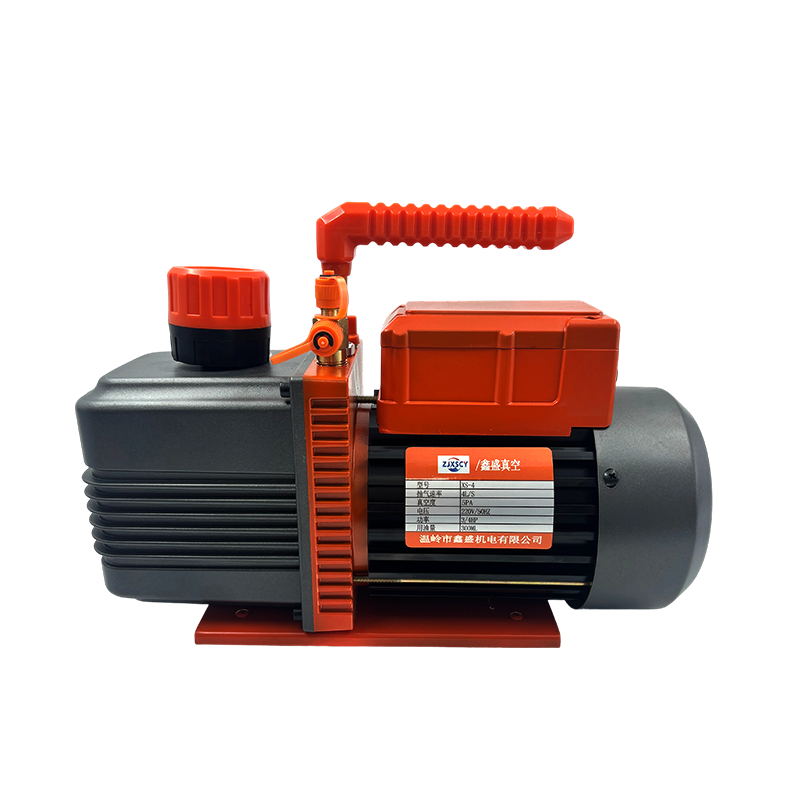Jun 06, 2025
An HVAC vacuum pump manifold gauge kit typically includes three main components:
Vacuum Pump:
Used to evacuate air, moisture, and non-condensable gases from HVAC systems, the vacuum pump ensures that the refrigerant circuit is clean before charging.

Manifold Gauge Set:
This set consists of pressure gauges, valves, and a manifold body, which allows technicians to measure high and low pressures within the system, control the flow of refrigerants, and perform diagnostic tasks.
Hoses and Connectors:
High-quality hoses connect the manifold to the vacuum pump and the HVAC system, ensuring a secure and leak-free connection.
Together, these components allow HVAC professionals to perform critical tasks such as evacuating air from refrigeration lines, charging refrigerant, and identifying leaks or pressure inconsistencies.
HVAC service and repair can involve significant expenses, especially when it comes to tools and equipment. However, choosing the right tools upfront can reduce operational costs, improve job quality, and extend the service life of HVAC systems. The cost-effectiveness of any tool lies not only in its initial purchase price but also in its durability, accuracy, ease of use, and the value it adds over time.
While some HVAC vacuum pump manifold gauge kits may come with a higher upfront cost, this investment often translates into long-term savings. Here are several reasons why:
Durability and Reliability:
A well-made manifold gauge kit is built with durable materials that withstand harsh job site conditions. Reliable performance reduces the frequency of replacements or repairs, cutting down overall tool expenses.
Precision and Efficiency:
Accurate pressure readings and efficient vacuum pumping ensure that systems are properly evacuated and charged. This prevents costly issues such as refrigerant contamination, reduced system efficiency, or premature equipment failure.
Time Savings:
Integrated kits simplify the workflow by combining necessary components in one package, reducing the time spent connecting and disconnecting separate tools. Faster service translates into more jobs completed and better labor cost management.
Reduced Refrigerant Waste:
Proper evacuation and charging minimize refrigerant loss, which is financially and environmentally beneficial given the high cost and regulatory restrictions on many refrigerants.
Practical Considerations Affecting Cost-Effectiveness
Several factors influence how cost-effective an HVAC vacuum pump manifold gauge kit can be in real-world applications:
Quality of Vacuum Pump:
Pumps with higher CFM (cubic feet per minute) ratings evacuate systems faster, saving time on each job. Oil-sealed rotary vane pumps are common for their durability and stable vacuum levels.
Gauge Accuracy:
Manifold gauges with clear, easy-to-read dials and accurate calibration prevent diagnostic errors, helping technicians make informed decisions and avoid unnecessary repairs.
Ease of Maintenance:
Kits designed for easy servicing, such as simple oil changes for pumps and replaceable gauge components, reduce downtime and maintenance costs.
Portability and Ergonomics:
Lightweight and compact kits improve mobility and reduce technician fatigue, indirectly enhancing productivity and reducing labor expenses.
Avoiding Common Pitfalls
Opting for the manifold gauge kit without considering quality may bring about hidden costs such as:
Frequent calibration issues causing inaccurate readings
Leaks in hoses or fittings bring about refrigerant loss
Lower vacuum pump efficiency, extending job duration
Premature tool failure requiring costly replacements
Thus, balancing cost and quality is essential to achieve true cost-effectiveness.
Real-World Examples of Cost Savings
Many HVAC companies report that investing in a reputable vacuum pump manifold gauge kit results in:
Faster system evacuations, reducing average service time by 20-30%
Fewer call-backs due to improper evacuation or charging errors
Reduced refrigerant purchase volumes thanks to minimized leakage
Enhanced technician confidence bring about improved service quality
These factors combine to improve the overall return on investment of the tool over its service life.